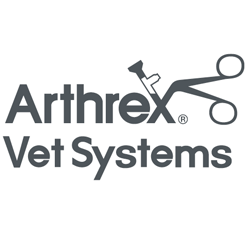2022 AAHA Pain Management Guidelines for Dogs and Cats
For a printable PDF, click here.
For a Japanese translation, click here.
On a mobile device? Scroll down for the navigation menu.
Abstract
 These updated guidelines present a practical and logical approach to the assessment and management of acute and chronic pain in canine and feline patients. Recognizing pain is fundamental to successful treatment, and diagnostic guides and algorithms are included for assessment of both acute and chronic pain. Particularly for chronic pain, capturing owner evaluation is important, and pain-assessment instruments for pet owners are described. Expert consensus emphasizes proactive, preemptive pain management rather than a reactive, “damage control” approach. The guidelines discuss treatment options centered on preemptive, multimodal analgesic therapies. There is an extensive variety of pharmacologic and nonpharmacologic therapeutic options for the management of acute and chronic pain in cats and dogs. The guidelines include a tiered decision tree that prioritizes the use of the most efficacious therapeutic modalities for the treatment of acute and chronic pain.
These updated guidelines present a practical and logical approach to the assessment and management of acute and chronic pain in canine and feline patients. Recognizing pain is fundamental to successful treatment, and diagnostic guides and algorithms are included for assessment of both acute and chronic pain. Particularly for chronic pain, capturing owner evaluation is important, and pain-assessment instruments for pet owners are described. Expert consensus emphasizes proactive, preemptive pain management rather than a reactive, “damage control” approach. The guidelines discuss treatment options centered on preemptive, multimodal analgesic therapies. There is an extensive variety of pharmacologic and nonpharmacologic therapeutic options for the management of acute and chronic pain in cats and dogs. The guidelines include a tiered decision tree that prioritizes the use of the most efficacious therapeutic modalities for the treatment of acute and chronic pain.
(J Am Anim Hosp Assoc 2022; 58:55–76. DOI 10.5326/JAAHA-MS-7292)
Introduction
Pain management is central to veterinary clinical practice. Alleviating pain is not only a professional obligation, as reflected in the veterinarian’s oath, but a key contributor to successful case outcomes and enhancement of the veterinarian-client-pet relationship. The primary purpose of these guidelines is to help veterinarians and veterinary team members confidently and accurately create a reproduceable pain assessment in cats and dogs, as well as an initial therapy plan with guidance on reassessing and adjusting the plan as needed. As such, these guidelines discuss pain management as a therapeutic continuum consisting of assessment, treatment, reassessment, and plan revision.
Pain management has been recognized as an essential component of compassionate care in canine and feline medicine—increasingly so over the last 20 years. With the approval of safe and effective nonsteroidal anti-inflammatory agents for veterinary use in the 1990s, analgesia became accessible as a therapeutic mainstay in postoperative settings and in cases of chronic pain. Although pain management is now an established component of therapy, the development of new analgesics and nonpharmacologic modalities makes this a still evolving facet of clinical practice. For this reason, these guidelines build on and update 2015 AAHA-AVMA pain management recommendations, 1 with the addition of the following topics of interest:
- A systematic approach to making reproducible pain assessments, including a discussion of available assessment methods and tools.
- Rather than present a randomized list, or buffet, of treatment options, a tiered decision tree based on evaluating acute and chronic pain has been developed to help with prioritizing the use of the most efficacious therapeutic modalities.
- The evolution of pain management from a reactive intervention to a proactive, preemptive, and multimodal strategy involving the entire practice team.
- Guidance on how pain management should differentiate between canine and feline patients, with an emphasis on the particular features of feline behavior.
These topics are accompanied by pertinent recent updates on pharmacologic and nonpharmacologic treatment modalities summarized in easy-to-reference tables. Using these resources, clinicians can make informed decisions on developing effective, case-specific treatment plans. Two concepts underlying this approach are preemptive analgesia to minimize pain onset and nociceptive pathology, and a multimodal treatment strategy to offset overreliance on any single drug with the attendant risk of side effects. With respect to chronic pain, most is known about the assessment and treatment of musculoskeletal pain (namely, osteoarthritis [OA]), and the guidelines reflect this. These guidelines are not intended to provide all-inclusive pharmacologic information, or a comprehensive review of felinefriendly handling techniques, nor do they attempt to present a comprehensive description of specific painful conditions. The guidelines further discuss the benefits of defined pain management roles for each practice team member and how client education plays an important part in ensuring that each patient is able to perform daily activities and maintain quality of life in clinical and home settings.
AI (artificial intelligence); CBPI (Canine Brief Pain Inventory); CMIs (Clinical Metrology Instruments); COAST (Canine OsteoArthritis Staging Tool); COX (cyclooxygenase); CSOM (client-specific outcome measures); FMPI (Feline Musculoskeletal Pain Index); HRA (health risk assessment); HRQoL (health-related quality of life); IA (intra-articular); LOAD (Liverpool Osteoarthritis in Dogs); mAB (monoclonal antibody); MICAT-C (Montreal Instrument for Cat Arthritis Testing - Caretaker); MiPSC (Musculoskeletal Pain Screening Checklist); NGF (nerve growth factor); NSAID (nonsteroidal anti-inflammatory drug); OA (osteoarthritis); PRA (prostaglandin receptor antagonist); SNoRE (Sleep and Nighttime Restlessness Evaluation); TRPV1 (transient receptor potential cation channel subfamily V member 1)
These guidelines were prepared by a task force of experts convened by the American Animal Hospital Association. This document is intended as a guideline only, not an AAHA standard of care. These guidelines and recommendations should not be construed as dictating an exclusive protocol, course of treatment, or procedure. Variations in practice may be warranted based on the needs of the individual patient, resources, and limitations unique to each individual practice setting. Evidence-based support for specific recommendations has been cited whenever possible and appropriate. Other recommendations are based on practical clinical experience and a consensus of expert opinion. Further research is needed to document some of these recommendations. Because each case is different, veterinarians must base their decisions on the best available scientific evidence in conjunction with their own knowledge and experience.







